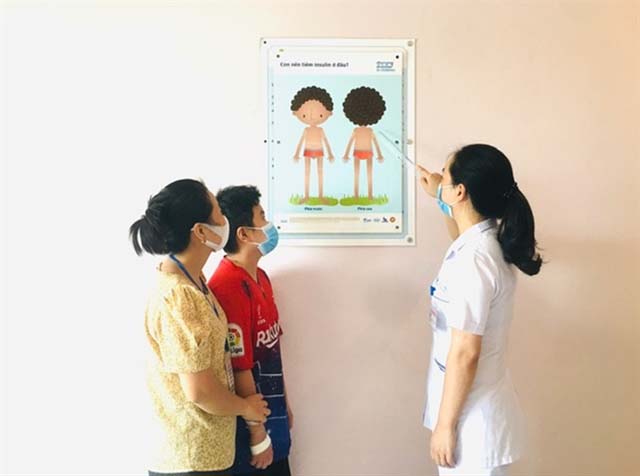June 28, 2024
Hanoi – Type 1 diabetes currently accounts for 90 percent of childhood diabetes cases. In Vietnam, around 2,000 children have been diagnosed with type 1 diabetes, according to data from a major children’s hospital, and the number is on the rise.
“Diabetes is a global public health threat, including in Vietnam,” said Nguyen Trong Khoa, deputy director of the Department of Medical Testing and Treatment.
“Diabetes leads to numerous health complications, including cardiovascular disease, eye problems and neuropathy, and is a leading cause of kidney failure and other complications. Diabetic patients with complications face increased healthcare costs as well as a reduced quality of life.”
Healthcare costs for adults with diabetes account for 12% of global healthcare expenditures. According to the International Diabetes Federation (IDF), approximately 537 million adults worldwide have diabetes in 2021, and that number is projected to rise to 783 million by 2045.
According to Core, nearly half of people with diabetes go undiagnosed. Many people live with type 2 diabetes for a long time without realizing it, and by the time they are diagnosed, complications have often already begun. However, 70 percent of type 2 diabetes cases could be prevented or delayed through healthy lifestyle choices.
Comprehensive epidemiological data on type 1 diabetes in children is not yet available in Vietnam, but data from a major children’s hospital show an increasing trend over the past seven years, highlighting ongoing challenges in diagnosis and treatment.
Tran Minh Dien, president of the Vietnam Pediatric Society and director of the National Children’s Hospital, explained that type 1 diabetes, also known as insulin-dependent diabetes, can develop at any age after infancy, but unfortunately, in some cases it was only discovered when patients fell into a critical condition, such as a coma or diabetic ketoacidosis.
“The cause of type 1 diabetes is related to various factors, including genetic predisposition, environmental influences, the immune system and beta-cell function. However, the specific roles of these factors are still unclear. Patients with type 1 diabetes should initially receive insulin treatment in hospitals and then receive stable dose management at home. Emphasis should be placed on monitoring and appropriate treatment to minimize complications,” Dieng said.
Previously, National Children’s Hospital only saw 10-15 cases of type 1 diabetes per year, but in recent years the number of patients has increased dramatically, and now several hundred children are treated each year. Currently, the hospital sees around 200-300 children with type 1 diabetes who undergo regular checkups and treatment.
Dien stressed that managing these patients in only a few major hospitals, such as the National Children’s Hospital, Children’s Hospital 1 and Hue Central Hospital, would be difficult due to the limited number of paediatricians specialising in diabetes. He suggested expanding the management network to more medical facilities, including smaller units that can handle 15-20 patients, to ease the burden on major hospitals and reduce the need for patients to travel to larger hospitals.
He also advised families with children being treated for type 1 diabetes to work closely with medical professionals to effectively manage the disease and enable their children to lead a normal life.
Early detection, diagnosis and timely treatment
Nguyen Trong Khoa further explained that the Ministry of Health has issued specific guidelines to standardize testing, monitoring and treatment of type 1 diabetes in children.
Developed based on national and international resources, the guidelines focus on the clinical practice of diagnosing and treating type 1 diabetes. According to Core, the guidelines will be particularly useful for general practitioners and specialists involved in everyday medical practice.
The guidelines were developed through the collaboration of two professional associations: the Vietnam Endocrinology and Diabetes Association and the Vietnam Pediatrics Association. This partnership brings together endocrinology and pediatrics experts with extensive clinical and teaching experience.
The Medical Testing and Treatment Administration on Monday held an online training session for grassroots medical staff on the implementation of guidelines for the diagnosis and treatment of type 1 diabetes in children and adolescents.
“Through this training, diagnostic and treatment guidelines will be introduced at all levels of clinical practice to support both general practitioners and specialists,” Mr Corr said.
“The ultimate goal is early detection, timely diagnosis, effective treatment and good control of type 1 diabetes, which will reduce the burden on children and families living with the disease and enable patients to live long, healthy lives.”

